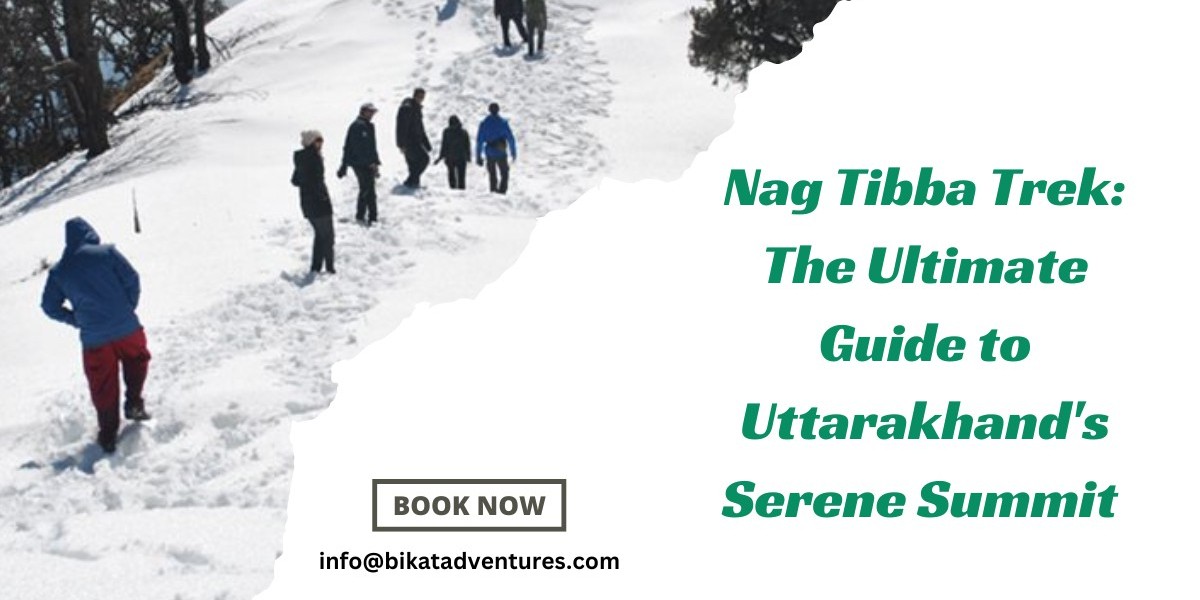Nag Tibba Trek: The Ultimate Guide to Uttarakhand's Serene Summit
The Nag Tibba trek, a hidden gem in the Garhwal region of Uttarakhand, offers an unparalleled trekking experience that combines natural beauty, serene landscapes, and cultural richness. Standing at an altitude of 9,915 feet, Nag Tibba, also known as the "Serpent's Peak," is the highest peak in the Nag Tibba range of the Garhwal Himalayas. This trek is an ideal getaway for those looking to escape the chaos of city life and immerse themselves in the tranquility of the mountains.
Introduction to the Nag Tibba Trek
The Nag Tibba trek is a relatively short and easy trek, making it accessible to beginners and experienced trekkers alike. Despite its moderate difficulty level, the trek offers stunning panoramic views of the snow-clad Himalayan peaks, dense forests, and charming villages. The trek is particularly popular among nature lovers, photography enthusiasts, and adventure seekers who wish to explore the lesser-known trails of Uttarakhand.
Located near Mussoorie, the trek to Nag Tibba can be completed over a weekend, making it a perfect option for a quick escape into the mountains. The trek is named after the Nag Tibba peak, which is revered by the locals as the abode of the Nag Devta, the serpent god. The trek not only provides an opportunity to experience the beauty of the Himalayas but also offers a glimpse into the rich cultural heritage of the region.
Reaching the Base Camp: The Journey Begins
The Nag Tibba trek begins from Pantwari, a small village located about 85 kilometers from Dehradun, the capital of Uttarakhand. The drive from Dehradun to Pantwari takes approximately three hours and offers picturesque views of the lush green valleys, terraced fields, and quaint villages. Pantwari serves as the base camp for the trek and is the starting point of the trail that leads to the summit of Nag Tibba.
Upon reaching Pantwari, trekkers are greeted with the warm hospitality of the locals and the serene beauty of the surrounding landscapes. The village, with its traditional houses and terraced fields, provides a perfect setting to begin the adventure. After a brief rest and some refreshments, the trek to Nag Tibba begins.
Day 1: Pantwari to Nag Tibba Base Camp
The first day of the Nag Tibba trek involves a gradual ascent from Pantwari to the Nag Tibba base camp, located at an altitude of approximately 7,600 feet. The trail is well-marked and passes through dense forests of oak, rhododendron, and deodar trees. As you make your way through the forest, the air is filled with the scent of pine, and the sound of birdsong accompanies you on your journey.
The trek to the base camp is relatively easy, with a few steep sections that add to the excitement. Along the way, trekkers can enjoy stunning views of the surrounding hills and valleys, as well as the distant snow-capped peaks of the Garhwal Himalayas. The trail also passes through several small hamlets, where you can interact with the local villagers and learn about their way of life.
After a few hours of trekking, you will reach the Nag Tibba base camp, a picturesque clearing surrounded by dense forests. The base camp offers panoramic views of the Himalayan range, including peaks like Swargarohini, Bandarpoonch, Kedarnath, and Gangotri. The campsite is an ideal place to relax, set up tents, and enjoy the serenity of the mountains. As the sun sets, the sky is painted in hues of orange and pink, creating a mesmerizing backdrop for the campsite.
Day 2: The Summit Push – Nag Tibba Peak
The second day of the trek begins early in the morning, with the goal of reaching the summit of Nag Tibba before noon. The trail from the base camp to the summit is steeper and more challenging than the previous day's trek, but the breathtaking views make the effort worthwhile. The trail passes through dense forests and open meadows, offering glimpses of the majestic Himalayan peaks.
As you ascend higher, the vegetation begins to thin out, and the landscape opens up to reveal stunning views of the surrounding mountains. The final stretch to the summit is the most exhilarating, as the peak comes into view, and the sense of accomplishment grows stronger with each step.
Upon reaching the summit of Nag Tibba, trekkers are rewarded with a 360-degree panoramic view of the Himalayas. The sight of the snow-covered peaks, stretching as far as the eye can see, is a sight to behold. The summit also offers a breathtaking view of the Doon Valley and the distant peaks of Nanda Devi, the second-highest mountain in India.
At the summit, there is a small temple dedicated to Nag Devta, where trekkers can offer prayers and seek blessings. The summit of Nag Tibba is a place of spiritual significance for the locals, and the peaceful atmosphere adds to the sense of serenity that pervades the trek.
The Descent: Returning to Pantwari
After spending some time at the summit, taking in the views and capturing memories, the descent begins. The return journey takes you back to the base camp and then to Pantwari. The descent is relatively easier and quicker, but it requires careful attention, especially on the steeper sections of the trail.
The return trek offers an opportunity to revisit the beautiful landscapes and enjoy the tranquility of the forest. As you make your way back to Pantwari, the sense of accomplishment from having completed the trek adds to the joy of the journey.
Upon reaching Pantwari, trekkers can relax and reflect on the experience before heading back to Dehradun. The drive back to Dehradun offers another chance to enjoy the scenic beauty of the region, as you bid farewell to the mountains and return to the hustle and bustle of everyday life.
The Best Time to Trek Nag Tibba
The Nag Tibba trek is accessible year-round, but the best time to undertake the trek is during the months of October to March. During this period, the weather is cool and pleasant, with clear skies offering unobstructed views of the Himalayan peaks. The winter months, from December to February, are particularly popular for the Nag Tibba trek, as the region receives snowfall, transforming the landscape into a winter wonderland.
For those who prefer a more temperate climate, the spring and summer months (April to June) are also a great time to undertake the trek. During this period, the forests are lush and green, and the meadows are in full bloom, offering a completely different but equally beautiful trekking experience.
Preparing for the Nag Tibba Trek
While the Nag Tibba trek is considered easy to moderate in difficulty, proper preparation is essential to ensure a safe and enjoyable experience. Trekkers should be in good physical condition, with some prior experience in trekking or hiking. Engaging in regular physical activity, such as jogging, swimming, or cycling, in the weeks leading up to the trek, can help build stamina and endurance.
In addition to physical preparation, it is important to pack appropriately for the trek. Essential items include warm clothing, trekking shoes, a sturdy backpack, a sleeping bag, and trekking poles. During the winter months, additional gear such as crampons and gaiters may be necessary to navigate the snowy terrain.
It is also advisable to carry a basic first-aid kit, along with any necessary medications, as well as sufficient water and snacks to keep you energized during the trek. Since the Nag Tibba trek is relatively short, it is important to pack light and carry only the essentials.
Conclusion: Why Nag Tibba Trek is a Must-Do
The Nag Tibba trek is a perfect blend of adventure, natural beauty, and cultural experiences, making it a must-do for anyone looking to explore the mountains of Uttarakhand. The trek offers a unique opportunity to connect with nature, experience the tranquility of the Himalayas, and immerse yourself in the rich cultural heritage of the region.
Whether you are a seasoned trekker or a beginner looking to embark on your first Himalayan adventure, the Nag Tibba trek provides an unforgettable experience. The ease of access, the stunning views, and the sense of accomplishment that comes with reaching the summit make this trek a truly rewarding journey.
The Nag Tibba trek is not just about reaching the summit; it is about the journey, the people you meet, and the memories you create along the way. From the warm hospitality of the locals to the breathtaking views of the Himalayas, every aspect of the trek leaves a lasting impression.
In the end, the Nag Tibba trek is a reminder of the simple joys of life – the joy of walking through the mountains, the joy of a warm campfire under a starlit sky, and the joy of standing on top of the world, if only for a moment. It is a trek that stays with you long after you have returned to the hustle and bustle of everyday life, a trek that calls you back to the serene summit of Nag Tibba.






